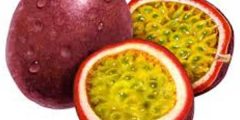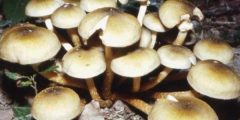Saffron plant
Saffron is a spice extracted from the flowers of Crocus sativus Linné. These flowers grow for three weeks in the period between the months of October and November, producing dark red stigmas similar to threads. These stigmas are picked by hand and then dried to form a Saffron spice, the saffron plant grows in parts of the continent of Europe and in the countries of the Middle East, and is widespread in Greece, Iran, and India.[XNUMX]To produce 450 grams of saffron, approximately 75 flowers are required. Saffron is grown in large quantities and harvested by hand only, which is why it is considered one of the most expensive spices in the world.[XNUMX]It is worth noting that the saffron plant grows to a length ranging from twenty to thirty centimeters, and the plant begins to produce flowers three years after its planting, as each plant bears approximately three or four flowers, and each flower contains three stigmas.[XNUMX]
Uses and benefits of saffron
Saffron is used to treat many diseases, including: asthma And Alzheimer's Heartburn, dry skin, and whooping cough. It also works as an expectorant, treats bloody coughs, relieves pain, treats flatulence resulting from the accumulation of gases in the intestines, and treats many psychological diseases such as fear and shock. Women use it to treat premenstrual syndrome, and men use it to treat premature ejaculation. And infertility. It also works as an aphrodisiac and increases sweating. It is used to treat alopecia by applying it to the scalp. It is used in food processing as a type of spice. It is also used to color foods yellow, and is used as a dye for fabrics. Saffron extract is also used as a scent added to perfumes.[XNUMX]Saffron is considered an anti-depressant, beneficial for heart health, and enhances memory because it contains crocin and crocetin, two chemical substances that researchers believe help enhance memory and learning functions.[XNUMX]Saffron has been used in medicine for thousands of years, as it has anti-cancer and anti-depressant effects, as we mentioned previously.[XNUMX]
Read also:Grape leaves shape
Side effects of saffron
Saffron is considered a safe food substance for most people who take it orally for a month and a half, but they may experience some possible side effects, which are: a feeling of drowsiness, nausea, headache, changes in appetite, anxiety, dry mouth, and dizziness. Some people may also develop allergies, and Taking large doses orally can be unsafe and may cause poisoning. The mucous membranes, eyes, and skin may appear yellow, and vomiting, bleeding from the eyelids, nose, and lips may occur, in addition to bloody diarrhea, dizziness, and other serious effects, as the dose ranging from From 12 to 30 grams may cause death.[XNUMX]
Categories that warn against eating saffron
- Pregnant and breastfeeding women: Taking saffron orally is usually in larger quantities than taking it as an additive to food, and it is unsafe as it may cause miscarriage, and the safety of taking it during breastfeeding is not known.[XNUMX]
- People with bipolar disorder: Saffron may cause agitation and an increase in reckless behavior in people with bipolar disorder.
- People with allergies: Some people are allergic to some plants, such as Salsola plants, and they may also be allergic to saffron.[XNUMX]
- People with heart disease: It affects the speed of the heartbeat and may lead to an increase in the severity of heart disease.[XNUMX]
- People with low blood pressure: It may cause blood pressure to drop significantly.[XNUMX]









